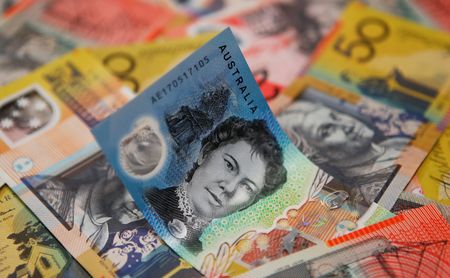By Shariq Khan
NEW YORK (Reuters) -Oil prices settled higher on Monday as analysts focused on potential fuel supply disruptions from fresh U.S. sanctions and Ukrainian drone attacks on Russian refineries, although predictions of a crude supply surplus kept gains in check.
Brent crude futures rose 43 cents, or 0.7%, to settle at $64.06 a barrel, while U.S. West Texas Intermediate crude futures advanced 38 cents, or 0.6%, to close at $60.13 a barrel.
Fuel futures led gains in the oil complex as U.S. gasoline futures closed over 1% higher and diesel futures rose close to 1%. A string of refinery issues in the U.S. and drone strikes on Russian refineries have helped lift fuel prices, analysts said.
“Refinery issues in the Great Lakes and West Coast have kept prices elevated,” GasBuddy analyst Patrick De Haan wrote in a blog post. He added that thousands of U.S. flight cancellations due to the federal government shutdown could also create more gasoline demand ahead of the Thanksgiving holiday.
Airlines canceled more than 2,800 U.S. flights and delayed more than 10,200 on Sunday in the worst day for disruptions since the start of the shutdown.
RUSSIAN SUPPLY CONCERNS
In Russia, oil major Lukoil’s Volgograd refinery halted operations last Thursday after it was struck by Ukrainian drones, three sources familiar with the matter said on Thursday. On Monday, Russian forces destroyed four drone boats near the country’s Black Sea port of Tuapse, a local task force said.
Lukoil also declared force majeure at Iraq’s giant West Qurna-2 oilfield, four sources with knowledge of the matter said on Monday, after Western sanctions on the Russian oil major hampered its operations.
Lukoil’s operations faced mounting disruptions as a U.S. deadline for companies to cut off business with the Russian company looms on November 21 and after an agreement to sell the operations to Swiss trader Gunvor collapsed.
FUEL LEADS, OIL LAGS
The oil market is split between rising volumes of crude stored at sea weighing on oil prices and limited availability of Russian refined products sustaining fuel prices, PVM analyst Tamas Varga said.
The volume of oil stored aboard ships in Asian waters has doubled in recent weeks after tightening Western sanctions curtailed imports into China and India, and onshore inventories were also on the rise in the U.S..
Both crude oil benchmarks fell about 2% last week, their second consecutive weekly decline, on expectations that crude oil supply will exceed demand in the months ahead due to higher OPEC+ production and record U.S. output.
This month, OPEC+, or the Organization of the Petroleum Exporting Countries and allied producers, agreed to increase output slightly in December.
While the group also paused further hikes in the first quarter, that may not limit supplies enough to support prices.
“Even with the prospect of reduced Russian supply and the 1Q26 freeze on OPEC+ production quotas, the global crude oil market may run a smaller supply/demand surplus rather than a more supportive deficit,” Evans said.
RISK APPETITE RETURNS
Oil prices were also supported by investors’ increasing willingness to hold so-called risk assets as signs emerged of progress towards ending the U.S. government shutdown.
The U.S. Senate moved forward on Sunday on a measure aimed at reopening the federal government and ending the shutdown that has sidelined federal workers, delayed food aid and snarled air travel.
U.S. lawmakers’ first step toward ending the shutdown boosted investors’ risk appetite, PVM’s Varga said.
(Reporting by Shariq Khan, Enes Tunagur and Florence TanEditing by Christian Schmollinger, Joe Bavier, Aidan Lewis, Conor Humphries, David Gregorio and Richard Chang)











